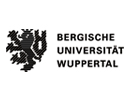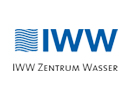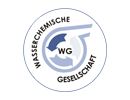information
glossary
amoeba
Ambobae are ubiquitous and only some forms are pathogens, thus cause diseases [amoebic dysentery = severe gastrointestinal diseases]. Frequently they are hosts for Legionella in drinking water distribution systems and co-founders of biofilms. Using chlorine dioxide can help to combat biofilms, amoebae and Legionella in piping systems.
AOX (adsorbable organic halogen compounds)
AOX represent a sum of ‘on activated charcoal adsorbable organically-bound halogens’ and serve to chemically evaluate water. Next to chlorine, considered halogens are bromine and iodine compounds (fluorine compounds are not included). Determination follows DIN EN ISO 9562. With this method it is possible to estimate chlorine-containing organic compounds generated during chlorine disinfection. As chlorine dioxide does not act as halogenating agent AOX levels are low in treated water. Contradictory findings could often be explained by chlorine impurities in chlorine dioxide stock solutions or biofilm detachment if this biofilm was treated with chlorine as disinfectant before. As Clorious2 is generated without chlorine gas or hydrochloric acid there is no chlorine excess and thus not able to form AOX.
bathing water
Bathing water according to 2006/7/EG (15.02.2006), is any element of surface water where the competent authority expects a large number of people to bathe and has not imposed a permanent bathing prohibition, or issued permanent advice against bathing. Public swimming pools and spa pools are excluded from this definition.
It happens that a recipient is bathing water at least in some selected sections. Thus bathing water quality in terms of hygiene has to be maintained, which can be solved by treating effluent from waste water treatment plant with chlorine dioxide.
ballast water
Ballast water is used in maritime transport to stabilise unladen or slightly laden ships during the trip. Necessary water is bulked in storage tanks. Together with the filling water present organisms are taken up and displaced over long distances. Surviving organisms can affect residential populations as neozoa, sometimes causing lasting damages. To prevent unlimited spread and corresponding loss of biodiversity, ballast water should be treated. Chlorine dioxide can help to sanitise already treated water without generating AOX-levels.
biocide
Biocides are active substances (chemicals or microorganisms) used against harmful organisms. The term 'biocide' is only used in non-agricultural fields. In the agricultural sector the term 'pesticide' is more common.
Regulation (EU) No 528/2012 of the European Parliament and of the Council of 22.05.2012 concerning the making available on the market and use of biocidal products provides 22 biocidal product types (PT) in total. Among them is PT 2 (Disinfectants and algaecides not intended for direct application to humans or animals), PT 3 (Veterinary hygiene), PT 4 (Food and feed area), PT 5 (Drinking water), PT 11 (Preservatives for liquid-cooling and processing systems), and PT 12 (Slimicides). For these mentioned product types chlorine dioxide as a biocide is provided all over Europe.
Use biocides safely. Always read the label and product information before use.
biocide in-situ generation
Biocide in-situ generation describes the process of biocide production on-site. This includes for example on-site generation of chlorine dioxide or ozone in a generator or production of chlorine/hypochlorite by electrolysis. Under this regulation of the making available on the market and use of biocidal products also these in-situ generated biocides are controlled. Therefore used reactants and products have to be approved.
Use biocides safely. Always read the label and product information before use.
Biocides Regulation
EU No 528/2012, of the European parliament and of the council (22.05.2012), concerning the making available on the market and use of biocidal products entered into force on 01.09.2013; expanded by regulation (EU) No 334/2014 of the European parliament and of the council of 11.03.2014 with regard to certain conditions for access to the market, entered into force on 25.04.2014.
CIP (Cleaning in Place)
CIP describes the process of cleaning of stationary plants - mainly in the food sector. Equipment parts are rinsed (lye-acid-disinfection) or heated to be under satisfactory hygiene conditions to continue, e. g. with a new filling cycle. Chlorine dioxide can help to eliminate biofilms.
cooling water
Cooling water helps to dissipate heat and is always in use where processes need to be cooled down. As open flow systems have a high demand of water and pose a temperature burden for receiving waters increased numbers of recirculation systems are in use today. Atmospherically open recirculation systems are characterised by cooling through evaporation of trickled water. Water that remains in the collecting basin after trickling should be treated before recirculation. Otherwise there could be a substantial multiplication of microorganisms in the system. Factors influencing microbial growth are increased water temperature, a certain nutrient supply (C, N, P) i.a. from surrounding air, sun light, neutral pH level and low flow rate. Possible countermeasures are a good system design, comprehensive control of water quality to see negative changes in an early stage and the use of biocides (oxidative and non-oxidative) to prevent microbial growth. Depending on size and height of the cooling tower it is possible to spread Legionella spacious together with swaths. Endangerment of service staff and residents cannot be ruled out. Biofilm isolates chillers for which reason plant management should be in accordance with generally accepted codes of practice and suggests the need of a biofilm management. Chlorine dioxide can help to eliminate biofilms on chillers without neither formation of AOX nor resistance of microbes.
dearsenication/arsenic removal
Comparable with deferrisation and demanganisation, arsenic is removed from water in case of “dearsenication”. Mainly caused geogenic arsenic (in groundwater) should be lower than 10 µg/L before consumption (reference by WHO). Trivalent existing arsenic has to be oxidised to pentavalent arsenic, to remove it from water procedural by filtration. Use of chlorine dioxide can support this oxidation. Frequently arsenic removal comes along with deferrisation.
deferrisation/iron-removal
Deferrisation describes the removal of ferrous compounds in groundwater (threshold in TrinkwV: 0.2 mg/L). In the course of water treatment (atmospheric) oxygen will oxidise bivalent iron to trivalent iron, which is hardly soluble as brown metal oxide hydrate. This is often filterable quite well. Is iron present as a complex in connection with humic acids, oxidation is more difficult. In that case support by chlorine dioxide is possible.
demanganisation/manganese removal
Demanganisation describes the removal of bivalent manganese in groundwater (threshold in TrinkwV: 0.05 mg/L). In the course of water treatment (atmospheric) oxygen will oxidise bivalent manganese to tetravalent hardly soluble black metal oxide hydrate. This is often filterable quite well. Demanganisation can be difficult if iron content is low and pH is slightly increased (>7,8). In these cases demanganisation should be optimized by addition of oxidants like potassium permanganate or chlorine dioxide.
domestic distribution system, house wiring/installation
Drinking water installations consist of all pipes, fittings and other devices between interconnection point of the water from public mains (head isolating equipment/main shut-off) and tapping point. German drinking water ordinance (TrinkwV) provides determined quality requirements till end users/consumers at the tap. Water suppliers have responsibilities for this good water quality until interconnection point. Thus there is a remaining responsibility for good water quality with the owner/operator of the domestic distribution system.
drinking water
Drinking water is water for human consumption which quality demands are in accordance with drinking water ordinance (TrinkwV in Germany). In compliance with § 4 section 1 there should not be any kind of impairment on human health by consumption or use especially not by pathogens. It has to be purely and fit for human consumption. Therefore German drinking water ordinance summerises precise requirements in terms of parameters and indicators. In addition TrinkwV determines frequency of testing, defines treatment substances and disinfection processes.
E. coli (Escherichia coli)
Escherichia coli is a rod-shaped bacterium with a length of 2 to 4 µm and a diameter of ca. 1 µm. It is one of the main research objects of microbiology and biochemistry, therefore well-known and regarded manifold as indicator for faecal contaminations. E. coli naturally occurs – always associated with other bacteria – as harmless inhabitant of human gut. However, there are strains of E. coli they evoke diarrhoea after oral intake (facultative pathogen). E. coli is already able to be killed effectively with low chlorine dioxide concentrations and low exposure times.
Enterococci (intestinal)
Intestinal enterococci (=faecal streptococci) are used as indicators for faecal pathogens. Mainly they occur as natural and desired bacteria in intestine. However, some enterococci strains can lead to infections. Under directive 2006/7/EC of the European parliament and of the council of 15.02. 2006 concerning the management of bathing water quality, intestinal enterococci are listed as hygienically relevant parameters.
GPRS within GSM
General Packet Radio Services within Global System for Mobile Communications
HDPE
High-Density PolyEthylen shows certain durability against aqueous chlorine dioxide solutions.
irrigation water
In many cases irrigation of lawns, fruits or vegetables is possible with service waters as long as there are no health risks. Hygienisation/sanitation of rainwater or other low contaminated service waters is achievable with low concentrations of chlorine dioxide. Residues and by-products as chlorite and chlorate/perchlorate should be taken into consideration. Information about hygienic-microbial classification and application of irrigation water is supplied by DIN 19650.
Legionella
Legionella has a rod-shaped form, is a gram-negative bacterium and lives ubiquitously in fresh water; preferred water temperatures lie between 25 °C and 45 °C. Optimum temperature for ideal growth is 37 °C. Therefore preferred colonisation occurs occasionally in technical water systems. Currently 57 species with 79 serogroups are known. Most significant species for human being is Legionella pneumophila (serogroup 1) as it causes increased numbers of legionellosis (pneumonia by Legionella) and Pontiac fever (flu-like). Inhalation of aerosols of water containing Legionella can lead to infestation of alveoles in deep pulmonary sections. Legionella uses amoebae as host and as a result is present in biofilm with higher incidence than in free aqueous phase. Sudden pressure drop due to showering can lead to a burst of amoebae. Hence, contaminated particles can be inhalated. Incubation time for legionellosis is 2 – 10 days. Epidemiological studies show that legionellosis occur enhanced at male sex (m/f 2.5) older than 50 years (partly smokers) or in case of predisposition (immunosuppressed). In severe clinical cases legionellosis is classically treated stationary with strong antibiotics (Levofloxacin or newer macrolide antibiotics).
M2M
M2M describes direct communication between two systems/devices. Information is exchanged automatically – frequently by mobile phone network (GPRS, GSM). By this way technical installations can be remotely monitored, controlled and process data are recorded. If you want to know more about our used system, call us or take a look at the webpage of our partner Microtronics.
odour
At first sight this parameter seems to be easy to describe, however, at second sight it is rather hard to present results in a consistent way as odours are perceived subjectively. Drinking water should be purely and fit for consumption and therefore odourless. With use of chlorine as disinfectant formation of odourous substances is possible (chlorophenols, aldehydes etc.). Use of chlorine dioxide as disinfectant leads to improvements in organoleptic properties of water as there is no formation of chlorinated compounds like chlorophenols.
Origin of odours in sewage treatment is mainly insufficient oxygen supply leading to anaerobic digestion with built up of hydrogen sulphide (H2S) and organic acids. As chlorine dioxide shows fast reaction kinetics with sulfur compounds it is possible to eliminate this kind of odours effectively.
For application of Clorious2air please contact us and we will help you to eliminate your H2S-based odour problem with chlorine dioxide.
PFA
Perfluoroalkoxy alkanes are fluoropolymers with properties similar to polytetrafluoroethylene (PTFE: Polytetrafluoroethylene, i.a. Teflon). Both materials show certain durability against aqueous chlorine dioxide solutions.
pharmaceutical residues/micro-pollutants (endocrine disrupter)
Nowadays, residues of drugs could be found in almost all waters by high-resolution analytical devices. They end up there by consumption and subsequent excretion – thus by waste water path. Even disposal of drug residues at the toilet or sink leads to a certain load of pharmaceutical active substances in waste water. A certain proportion of substances reaching the waste water treatment plant can be eliminated/transformed by sewage treatment. However, depending on characteristics of substances, some of them will pass all process steps unhindered and will end up in clear phase.
Pseudomonas aeruginosa
Pseudomonads are ubiquitous bacteria. With regard to human medicine the most important representative of Pseudomonads is P. aeruginosa. It lives in soil, water or even intestinal tract of humans; however, it needs humid living conditions although in general it is quite modest. To protect against predators pseudomonads create slime/biofilm. The majority of genus members developed resistance against antibiotics over time. Within immunocompromised patients Pseudomonas aeruginosa can lead to purulent wound infections. It is said to be a classical hospitalism germ.
sanitation
Sanitation covers a wide range of processes leading from reduction to elimination of microbial contaminations. Disinfection can be the aim of sanitation. Disinfection is defined as a 5-log reduction of microbes (within 20-30 min) and afterwards there is no remaining risk of infection by this water. To reach this goal particle-free water is necessary; otherwise microbes survive in protected/shielded areas.
Instead, sterilisation is defined as a 6-log reduction of microbes. Mostly disinfection is performed chemically, sterilisation thermally (> 121 °C).
The term sanitation is frequently used in context of microbes’ reduction in treated waste water (clear water) or in digested sludge by stabilisation in digesters. In these cases a certain remaining concentration of microbes is accepted.
viruses
Viruses are extremely small particles with a size of 1 –10 nm. They only consist of genetic material, which is covered with a protective protein coat. Viruses do not have any own metabolism and therefore can not reproduce themselves. They need cells of a host which they enter to infiltrate their genetic material. These cells are forced to produce more viruses. There is a huge number of different viruses, only a few of them have pathogen potential against human being (e.g. Poliomyelitis virus, Norwalk virus, Rota virus). With sufficient concentration and contact time (cxt) chlorine dioxide can act effectively against viruses.
Bacteriophages are viruses they use bacteria as host.









